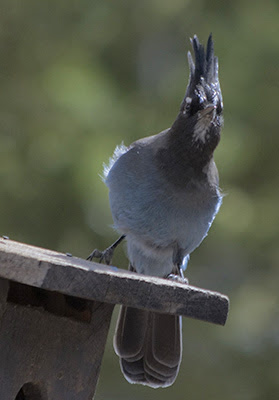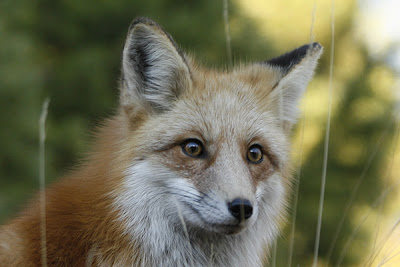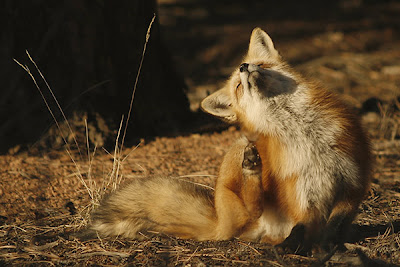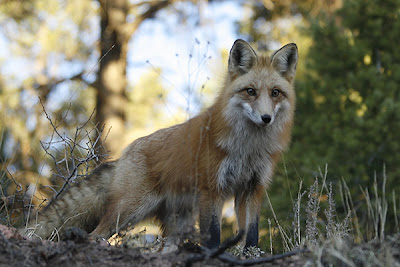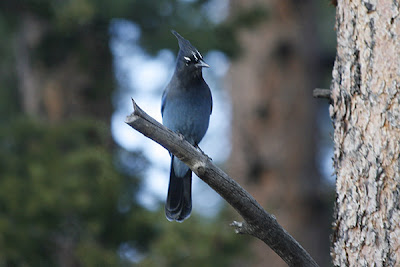I photographed Stellers Jays in the warm morning sunlight yesterday.
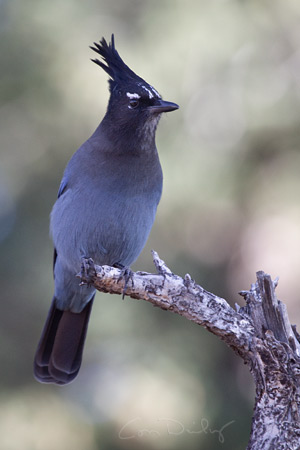
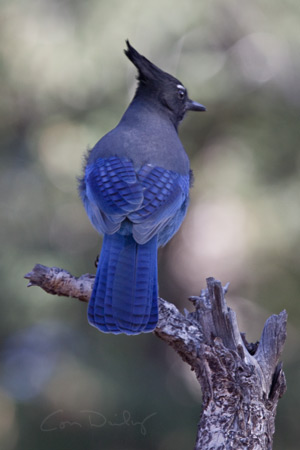
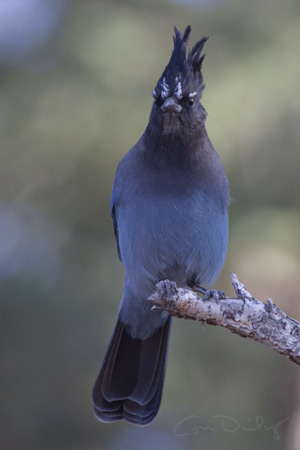
Today we have snow, the first of the season.
I photographed Stellers Jays in the warm morning sunlight yesterday.



Today we have snow, the first of the season.
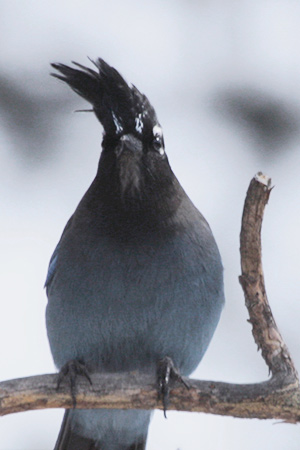
I saw some bald blue jays over at Zen Birdfeeder recently. My stellers jays aren’t bald, but their head feathers aren’t very black anymore, and all the feathers look a bit rough. The birds hide in the grass as though they don’t wish to be seen in molt.
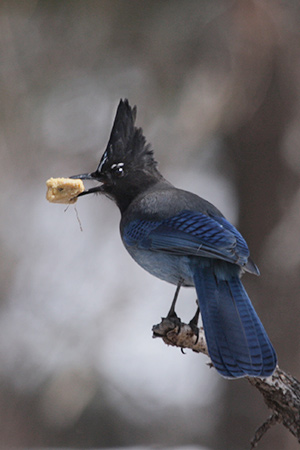
Snow falling through bright, cloud-filtered sunlight today
A chunk of suet, happy stellers jay
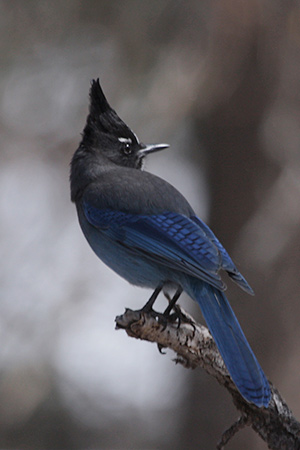
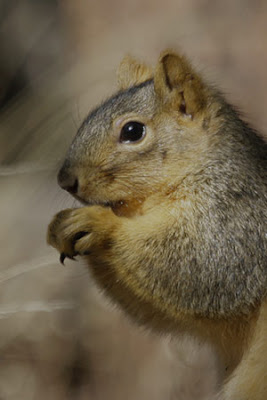 The 100-400mm and I are getting along fine, though I?ve not encountered the larger wildlife subjects I would prefer to photograph to test it. The stellers jays and squirrels are willing to pose briefly as they hurry to and fro picking up their payment of seeds and nuts.
The 100-400mm and I are getting along fine, though I?ve not encountered the larger wildlife subjects I would prefer to photograph to test it. The stellers jays and squirrels are willing to pose briefly as they hurry to and fro picking up their payment of seeds and nuts.
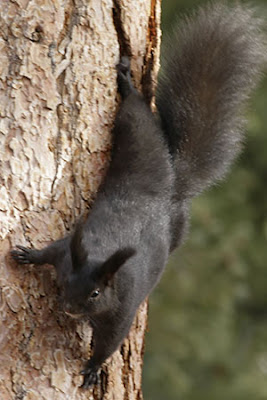
The squirrels spend so much time chasing each other away from the food, they eat very little. The jays seem to enjoy the contest of who-can-eat-the-most, so the first to arrive calls out to others. Let the eating begin!
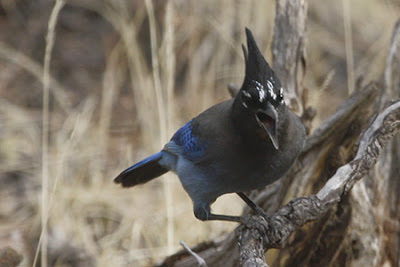
The lens is a bit heavy for me at 3 pounds, so hand held photography is alternated with tripod support. The manual says to switch off the IS (image stabilization) when using a tripod, but I sometimes forget. When I do remember, I then forget to switch it on again for hand held. Wish I could buy more memory for my wee brain.
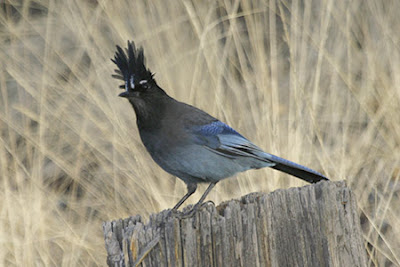
I like to shoot aperture priority when photographing birds as they move in and out of the shadows so quickly. All the images in this post were shot at f/5.6 with the ISO at 400 or higher. Shutter speeds vary with each image.
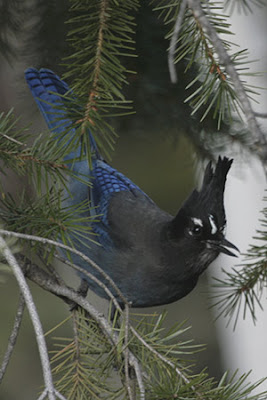
I?ve been working around the outside of my home, mostly shooting from the deck into the trees. Since the house is on a steep hillside, shooting from the deck often puts me at eye level with the birds in the trees.
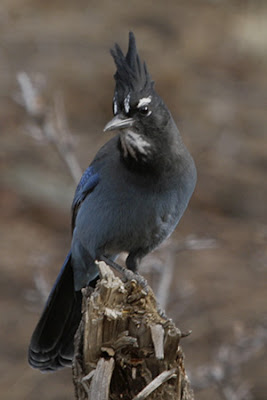
When I photograph birds, I begin to recognize individuals by the variations in their markings or injuries they have. I believe the birds are taking in the sight of me as well. I changed hats this morning as the temperature rose. When I put on the new hat, the birds flew up to higher branches and watched me for some minutes before coming back to feed. I suppose they?ve taken note of the new lens, too.
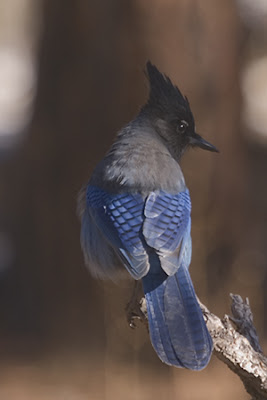 As recently promised in comments, the backside of the stellers jay.
As recently promised in comments, the backside of the stellers jay.
I’ve been playing with a new lens, canon EF 100-400mm f/4.5-5.6 L IS USM. We’ve had frigid temperatures, but I got a few stellers jays to come out and play. The lens is working well so far and I’m hoping for a chance to use it a bit more this week. The zoom is operated push, pull instead of twist. I have to get used to that. I love the full time manual focus; you can use the auto focus first and then fine tune manually without turning off the auto focus. I have one other lens that has full time manual focus and wish they were all FTM.
The stellers jay image: 1/250 second, f5.6, 340mm, ISO 250
More to come with this lens… I’m hoping for some big furry mammals to wander by, deer, elk, or a bear at a distance.
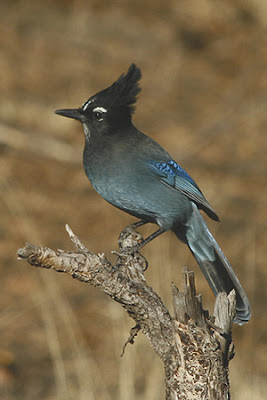
Their faces are so expressive that I want make cartoon captions for the images. (anthropomorphic, don’t scold me, I know!) I photograph this common bird frequently and love sorting through the results of an hour spent with them. The stellers jays’ crested heads change continually, sometimes the feathers are fluffed, sometimes spread into a crown, often folded into a sharp peak. They seem always hungry, so if I throw out a bit of seed or peanuts they come to the feast and pose for me. 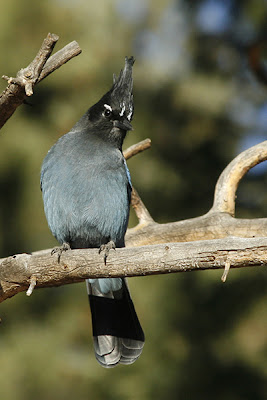 These are crops of the low resolution jpegs. I shoot RAW plus jpeg, but usually only process the raw files for printing. For the blog images, I just crop, if needed, the jpegs and resize them smaller for easy viewing on the web.
These are crops of the low resolution jpegs. I shoot RAW plus jpeg, but usually only process the raw files for printing. For the blog images, I just crop, if needed, the jpegs and resize them smaller for easy viewing on the web.
